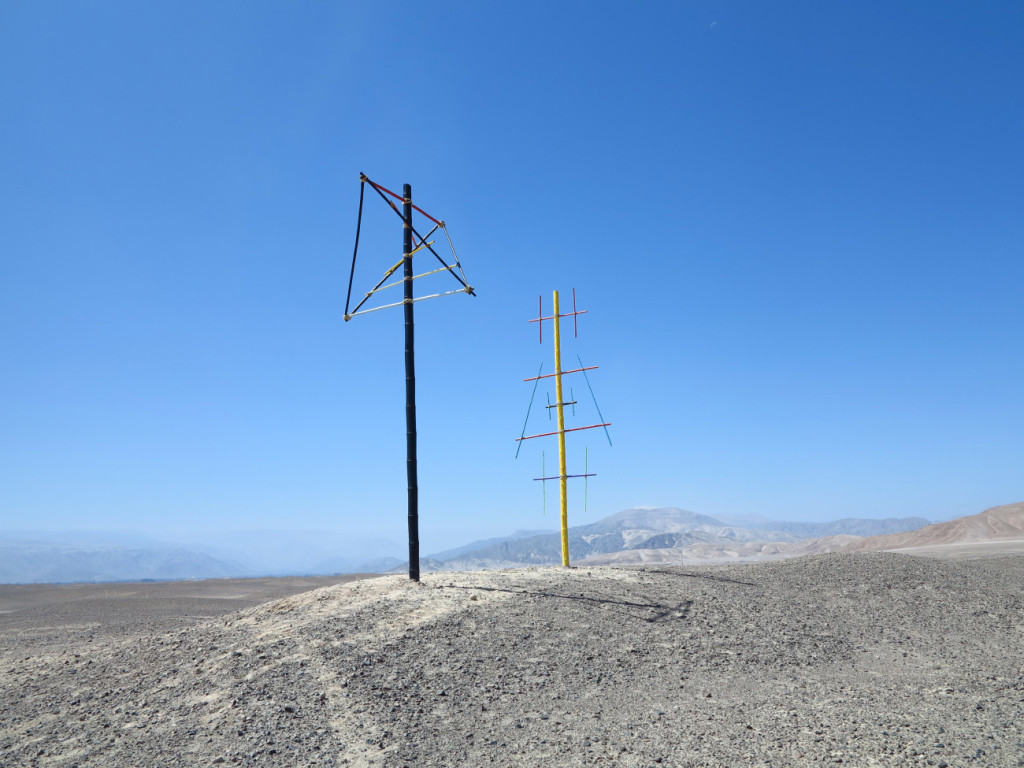Sixe Paredes

“In my imagination, mountains and nature have provided me with the inspiration on which I have based a number of my works. I like the idea of the mountains as a magical place, like the starting point of transcendence. Nature as a being, together with all of its elements.”
Interview for “El Espiritu De La Montana”. Catalogue for ALICEgallery, January 2017.
In 2006, the city of Barcelona had recently adopted new policies in an attempt to stamp out graffiti. Still though, from time to time, at the turn of an alleyway, you would have the pleasure of stumbling upon one of Sixe’s beautiful wall paintings. The artist was the best to capture the spirit of this city in his works: colour, life, liberty, youth, party!
His painting on the facade of Tate Modern in London for the exhibition «Street Art» revealed his work to the greater public.
Over the past few years, time spent travelling, notably his trip to Peru, has shaped the philosophy and work of Sixe Paredes. In particular, the power of symbolic archetypes (identical in many ancient cultures), myths, legends and other mysteries lost in the mists of time. The study of certain ancient techniques such as ceramics and weaving, has broadened his artistic expression and humanistic consciousness.
His monumental urban paintings unite our civilisation with those that came before us. The work recalls the primitive forms of ancestral cults when man was close to nature. It evokes a divine language that brings magic into our concrete universe. Today, Sixe Paredes is not only an artist, but also a kind of shaman who invokes our breadth of spirit through his colourful compositions.
“In my imagination, mountains and nature have provided me with the inspiration on which I have based a number of my works. I like the idea of the mountains as a magical place, like the starting point of transcendence. Nature as a being, together with all of its elements.”
Interview for “El Espiritu De La Montana”. Catalogue for ALICEgallery, January 2017.
En 2006 Barcelone changeait de politique et réprimait le graffiti. Mais parfois il vous arrivait encore, au détour d’une ruelle, de tomber face à une peinture murale de Sixe Paredes. Il était l’artiste qui traduisait le mieux dans ses œuvres l’esprit de cette ville: couleurs, vie, liberté, jeunesse, soirées!
C’est la peinture réalisée sur la façade de la Tate Modern à Londres pour l’exposition Street Art qui l’a véritablement révélé au grand public.
Ces dernières années, les longs voyages, notamment au Pérou, ont fortement imprégné la philosophie et le travail de Paredes. En particulier la force des archétypes symboliques, identiques à de nombreuses cultures ancestrales, mythes, légendes et autres mystères perdus dans la nuit des temps. L’étude de certaines techniques millénaires telles que la céramique et le tissage a élargi son expression plastique et sa conscience humaniste.
Ses peintures monumentales urbaines unissent notre civilisation à celles qui nous ont précédés. Elles rappellent les formes primitives des cultes oubliés où l’homme était proche de la nature. Il évoque un langage divin qui apporte de la magie dans notre univers de béton. Aujourd’hui, Sixe Paredes n’est plus seulement un artiste, mais aussi une sorte de shaman qui invoque notre grandeur d’esprit par ses compositions colorées.
“In my imagination, mountains and nature have provided me with the inspiration on which I have based a number of my works. I like the idea of the mountains as a magical place, like the starting point of transcendence. Nature as a being, together with all of its elements.”
Interview for “El Espiritu De La Montana”. Catalogue for ALICEgallery, January 2017.
In 2006 veranderde Barcelona van politieke koers: graffiti was voortaan verboden. Maar af en toe kwam je nog ergens een muurschildering van Sixe Paredes tegen. Deze kunstenaar wist de ziel van deze stad als geen ander tot uitdrukking te brengen: kleuren, leven, vrijheid, jeugd, feest!
Zijn werk op de gevel van het Tate Modern in Londen in het kader van de expo Street Art verleende hem internationale bekendheid.
De voorbije jaren heeft Sixe veel gereisd, onder meer naar Peru. Die reizen hebben zijn werk en zijn filosofie sterk beïnvloed. Vooral de symbolische archetypen die in veel oude culturen, mythen en legendes te vinden zijn en die vaak met elkaar overeenstemmen, lieten hun sporen na. Hij liet zich inwijden in oude technieken zoals pottenbakken en weven. Dit heeft zijn plastische expressie en zijn humanistisch bewustzijn verdiept.
Zijn monumentale stadsschilderingen verbinden onze cultuur met de beschavingen die ons zijn voorgegaan. Ze herinneren aan de primitieve vormen van vergeten cultussen die de mens met de natuur verbonden. Hierdoor valt in onze betonnen wereld een goddelijke taal waar te nemen, een stukje magie in het hedendaagse. Sixe Paredes is vandaag niet meer alleen een kunstenaar. Hij is een soort sjamaan die met zijn kleurrijke composities tot onze ziel weet te spreken.


